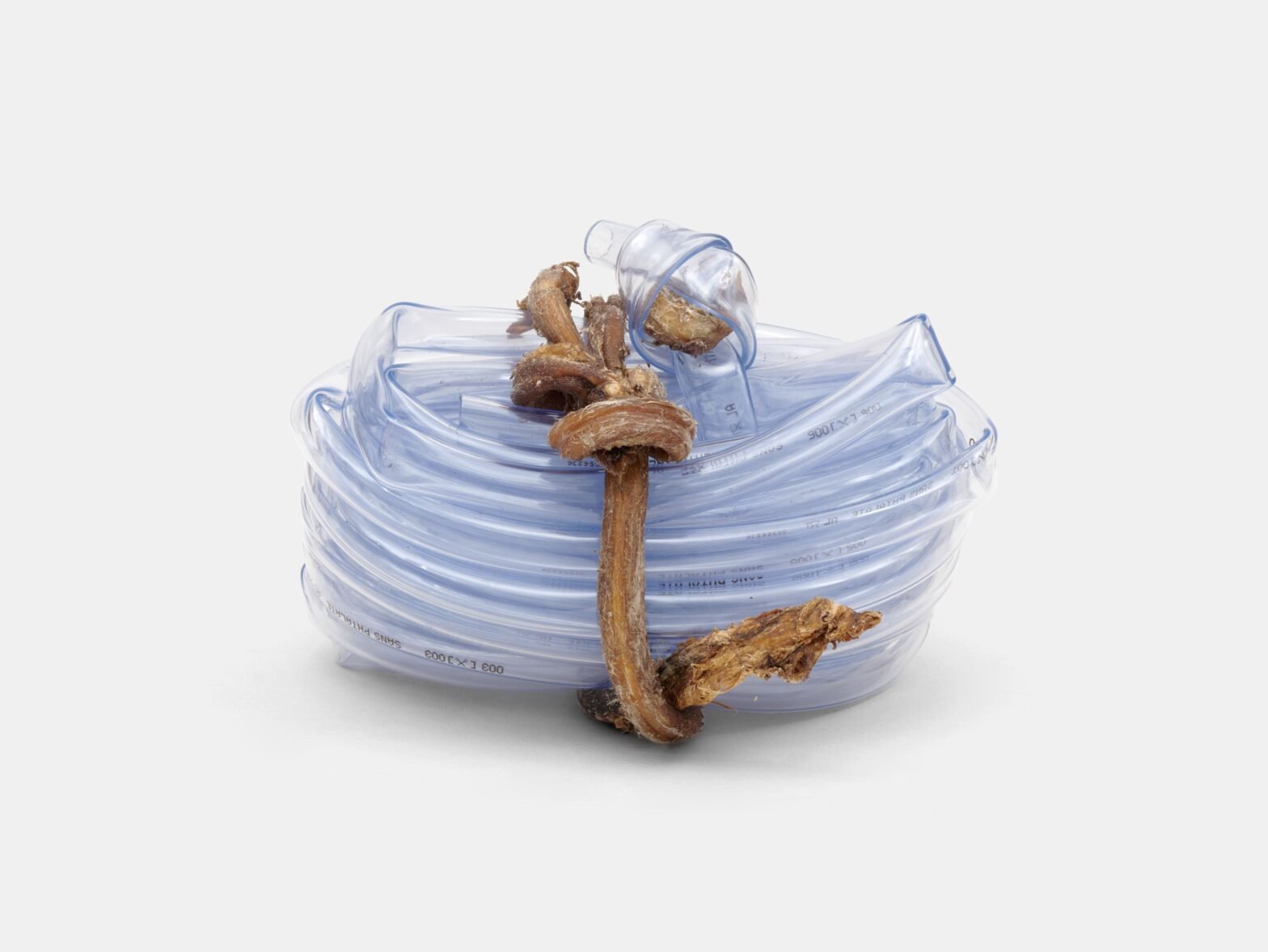Thomas Dane Gallery, Naples (17 September – 14 December 2024)
In the eight years since Moulène last exhibited with the gallery, his ‘Objets’/‘Objects’ have been central to the current narratives and discourses on sculpture. Included in significant surveys, such as When Forms Come Alive: Sixty Years of Restless Sculpture (2023) at the Hayward Gallery and May You Live in Interesting Times (2019) at the 58th Venice Biennale, his works question the very nature, texture, core, envelope and, ultimately, future of the form. Like many artists before him, from Donald Judd to Michelangelo Pistoletto, Moulène conceives of his three-dimensional works as objects, eschewing the term and connotations of sculpture. In explaining his re-examination of the habitual through the process of creation, Moulène said: “I speak of image and object, of photograph and product, both transformed. What interests me are the functions of transformation. What then is an ordinary object? What orders organise it, construct and transform it?”
In Moulène’s hands the quotidian transforms through rigorous improvisation. Enumerating the materials used across the thirty-six works in the exhibition reminds us of the resourcefulness that underpins the resulting alchemy: cardboard, plastic, plaster, bronze, zinc, aluminium, wood, bones, chicken wire, silicone, fabric or concrete adorned with resin, paint, glue, ink, silver leaf, wax and mushroom spores.
Moulène’s Naples exhibition will focus on recent and new works from Opus , a body of work that has been in progress since 1995 and spans table-top, hanging and floor-based works. Fixed Zinc , Hobart (2021), first shown last year at MONA in Tasmania and made from alloyed zinc, smelted on the shores of the River Derwent and Bell Bay of Tasmania, will create a focal point for the exhibition, alongside a new work, Vortex (2024), inspired by the smoking Mount Vesuvius, seen from the gallery veranda. The siting of the Opus series against the backdrop of Naples and its volcano will evoke the myths, excavations, vessels, relics, monuments, shrines and ex-votos that reside within this body of work.
Table-top works produced from raw or industrial materials, including bronze, stone and resin, that continue Moulène’s exploration of materials, will be placed according to a mathematical grid across the gallery floor and walls. As with all of Moulène’s work the objects and the display will follow strict rules imposed by the artist, often resulting in unforeseen interactions between materials and unusual object placements. Each work, whether an ‘Objet’, photograph, or drawing, that muddles the hierarchies of artistic forms, will sit at an intersection of this superimposed grid, remapping the gallery space as a quasi-archaeological search ground.
This grouping of works is titled Enlightenments in reference to the emergence in the 18th century of the philosophy ‘Siècle des Lumières’, which espoused knowledge and freedom as counteracting forces to tyranny and bigotry. The title could also name what Moulène conceives as an ‘album’, in which each work represents a song, a unique thought, or an experience, linked by a ‘poetry’ of collective memory and formal occurrence.
Jean-Luc Moulène (b. 1955, France) lives and works in Normandy. He studied Aesthetics and Sciences of Art at the Sorbonne University in Paris where he lived for many years before building his new studio. Since the 1980s he has developed a body of work informed by the critical investigation of authorship, and an exploration of issues of autonomy, immanence, and anarchic politics. Over the course of his artistic career, Moulène has maintained a parallel exploration of materials – manufactured and found, industrial and organic. His work is an attempt to link art back to different modes of thought; at the same time, it is an integrative project that adamantly and systematically refuses to resort to prescribed approaches to theory and interdisciplinary characteristics of the contemporary art historical canon and curatorial practices.
Image caption:
Jean-Luc Moulène, Tout-Tuyau-Tout-Nerfs, Le Buisson, 2024
beef tendons, PVC
17.5x26x23cm.
7×101/4x9in.
© Jean-Luc Moulène/ADAGP Paris. Courtesy the artist, and Thomas Dane Gallery. Photo: M3 Studio srl.





















